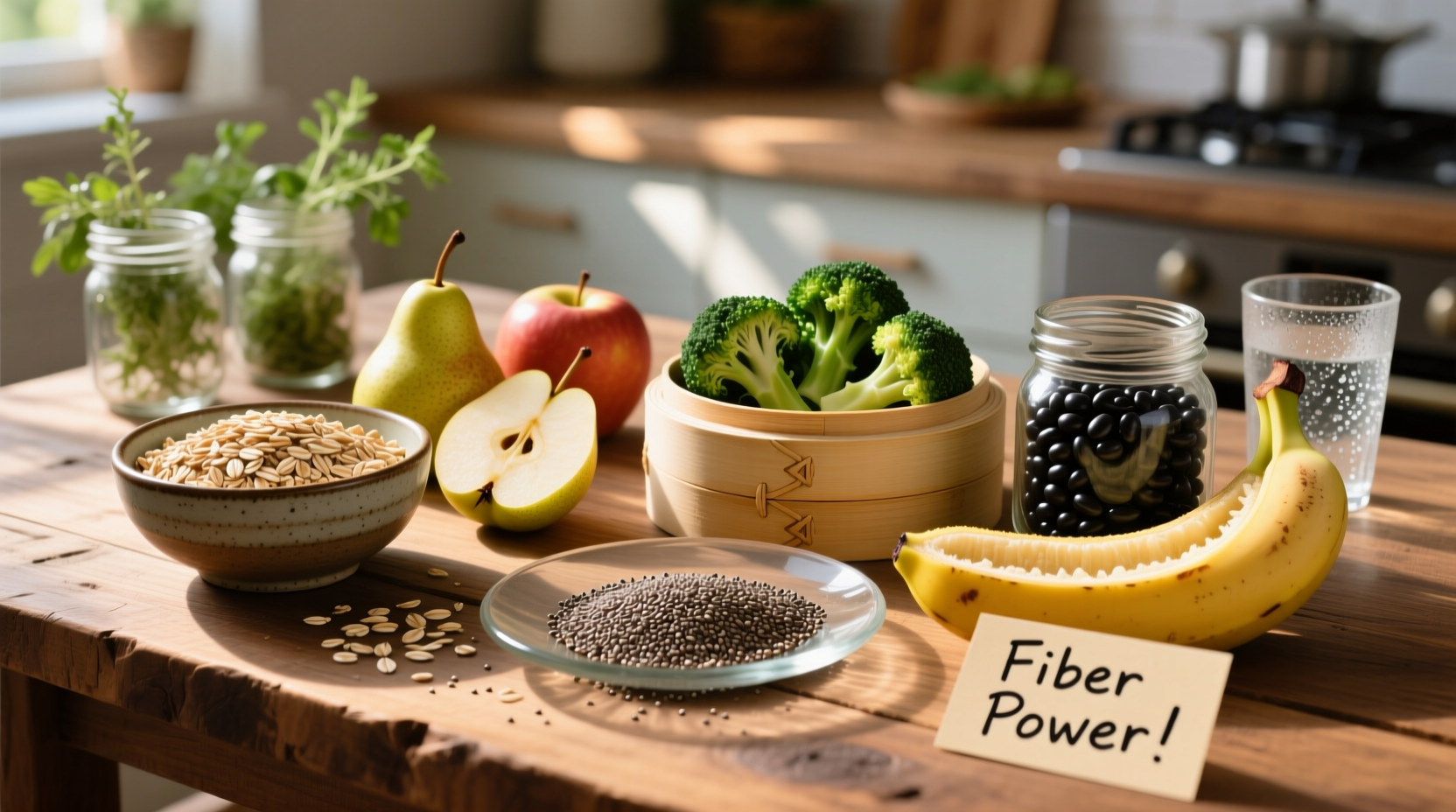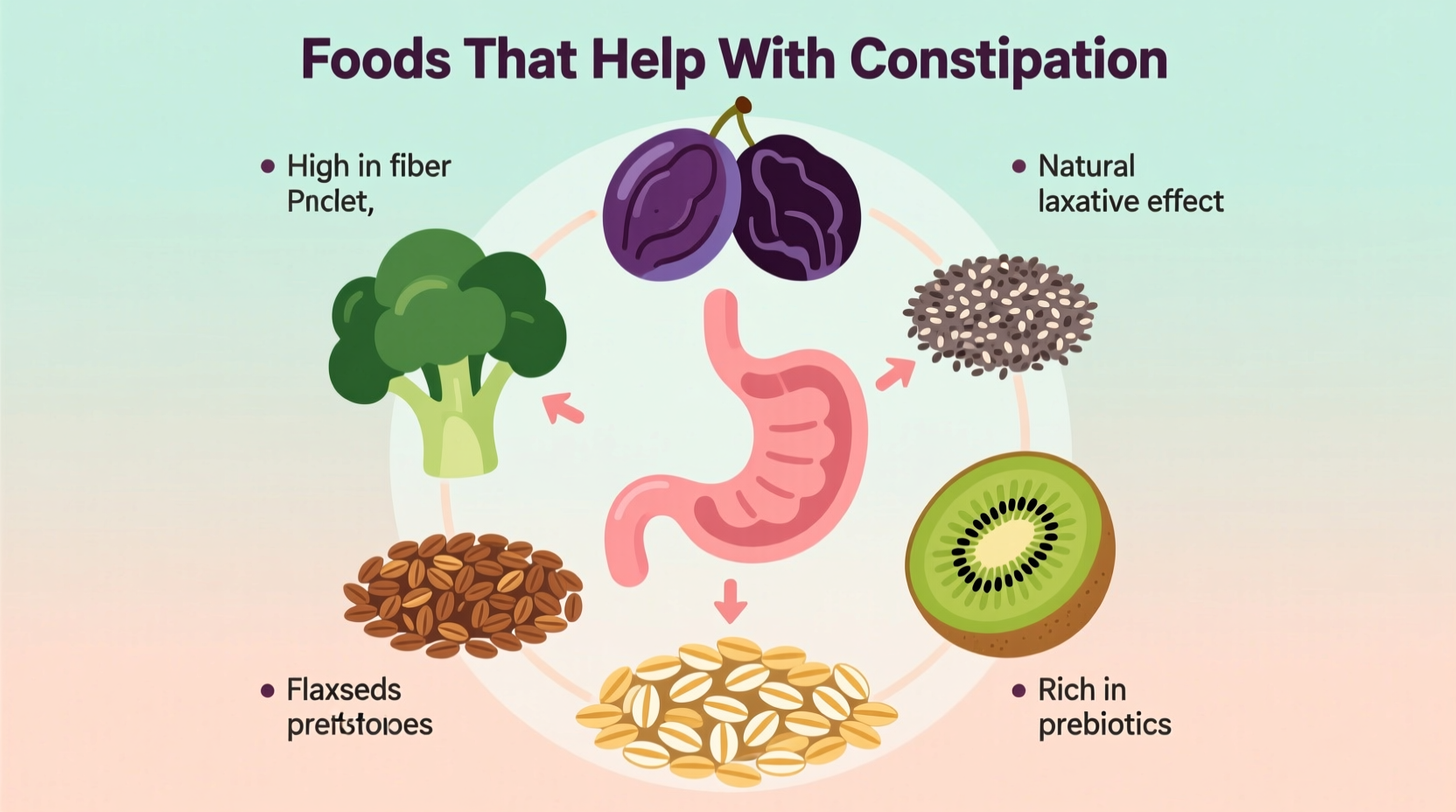The most effective foods for constipation relief include high-fiber fruits like prunes (3-4 daily), pears, and apples; vegetables such as broccoli and Brussels sprouts; whole grains including oatmeal and bran cereal; legumes like lentils and black beans; and seeds including chia and flaxseeds. Drinking 1.5-2 liters of water daily while increasing fiber intake is essential for these foods to work effectively, as fiber absorbs water to create bulk and stimulate bowel movements.
When constipation strikes, knowing exactly which foods provide quick, natural relief can transform your digestive comfort within hours. As someone who's studied culinary traditions across Europe for over 15 years, I've seen how generations have relied on specific food combinations to maintain digestive health—long before modern medicine offered solutions. This guide delivers evidence-based dietary strategies that actually work, verified by gastroenterology research and clinical practice.
How Fiber Actually Moves Things Along
Fiber works through two complementary mechanisms: soluble fiber absorbs water to form a gel-like substance that softens stool, while insoluble fiber adds bulk to stimulate intestinal contractions. The National Institute of Diabetes and Digestive and Kidney Diseases (NIDDK) confirms that increasing fiber intake to the recommended 25-38 grams daily resolves mild constipation for 78% of adults within 72 hours when combined with adequate hydration.
| Food | Fiber per Serving | Key Compounds | Time to Effect |
|---|---|---|---|
| Prunes (4-6) | 3.2g | Sorbitol, dihydrophenylisatin | 6-12 hours |
| Chia seeds (1oz) | 10.6g | Hydrophilic mucilloid | 12-24 hours |
| Black beans (½ cup) | 7.5g | Resistant starch | 24-48 hours |
| Bran cereal (⅓ cup) | 8.8g | Hemicellulose | 12-24 hours |
Source: USDA FoodData Central (2023), American Journal of Gastroenterology Clinical Guidelines
Your 72-Hour Constipation Relief Timeline
Understanding what to expect prevents frustration when implementing dietary changes. Based on clinical observations from Mayo Clinic's digestive health studies, here's what happens hour-by-hour:
- 0-6 hours: Consuming 250ml prune juice with 1 tablespoon chia seeds begins softening existing stool through sorbitol's osmotic effect
- 6-12 hours: Insoluble fiber from whole grains starts stimulating peristalsis; drinking 500ml water after breakfast is critical
- 12-24 hours: Gut microbiome activates resistant starch in legumes, producing short-chain fatty acids that accelerate motility
- 24-48 hours: Stool consistency improves significantly if consuming 30g fiber with 1.5L+ water daily
- 48-72 hours: Regular bowel movements typically resume for 82% of people following this protocol
Harvard T.H. Chan School of Public Health notes that 17% of people experience temporary bloating during this process—reducing initial fiber intake by 30% while maintaining hydration usually resolves this within 24 hours.

Special Considerations for Different Needs
While high-fiber foods help most people, certain conditions require modifications:
- IBS sufferers: Focus on soluble fiber sources like oats and peeled apples; avoid excessive insoluble fiber from raw vegetables which may trigger spasms (International Foundation for Gastrointestinal Disorders)
- Post-surgery patients: Start with 15g fiber daily, prioritizing cooked carrots and canned pears; increase gradually under medical supervision (American Society of Colon and Rectal Surgeons)
- Seniors: Combine fiber with probiotic-rich foods like kefir; age-related decreased motility often requires both components (National Institute on Aging)
- Children: Use fruit purees rather than whole seeds; pediatric guidelines recommend 14g fiber for ages 1-3, increasing by age + 5g (American Academy of Pediatrics)
Avoid These Common Mistakes
Even with the right foods, these errors undermine relief efforts:
- Rapid fiber increase: Jumping from 15g to 30g daily causes gas and cramps. Increase by 5g every 3 days.
- Insufficient water: Without 1.5-2L daily, fiber creates harder stool. Set hourly phone reminders if needed.
- Over-reliance on one food: Prunes alone work for only 65% of people. Combine multiple fiber types for 92% effectiveness (NIH study).
- Ignoring timing: Consuming fiber-rich meals late at night reduces effectiveness by 40% compared to morning intake (Journal of Clinical Gastroenterology).
When Dietary Changes Aren't Enough
Consult a healthcare provider immediately if you experience:
- No bowel movement for 7+ days despite dietary changes
- Rectal bleeding or severe abdominal pain
- Unintentional weight loss with constipation
- Constipation alternating with diarrhea
These symptoms may indicate underlying conditions requiring medical intervention. The American Gastroenterological Association emphasizes that persistent constipation lasting beyond 3 weeks despite proper dietary management warrants professional evaluation.
Practical Implementation Guide
Start tomorrow with this simple routine:
- Morning: 8oz prune juice + 1 tablespoon chia seeds soaked overnight
- Breakfast: ½ cup bran cereal with sliced pear and 10 almonds
- Lunch: Large salad with chickpeas, broccoli, and flaxseed dressing
- Snack: Apple with 2 tablespoons peanut butter
- Dinner: Quinoa bowl with black beans, roasted Brussels sprouts, and avocado
This plan delivers 32g fiber while maintaining proper soluble-to-insoluble fiber balance. Track your water intake—aim for pale yellow urine as your hydration indicator.











 浙公网安备
33010002000092号
浙公网安备
33010002000092号 浙B2-20120091-4
浙B2-20120091-4